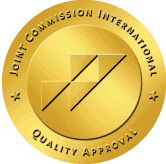You wake up in an unfamiliar room with fragmented memories of the night before, wondering how you got there and what happened during those missing hours. This terrifying experience affects countless people who consume alcohol, regardless of their age or drinking experience. Alcoholic blackouts – complete gaps in memory during intoxication – occur when your brain temporarily loses its ability to transfer information from short-term to long-term storage.
These memory lapses aren’t just embarrassing social mishaps; they’re serious medical events that signal dangerous levels of alcohol consumption. When you black out, your hippocampus – the brain’s memory center – becomes so impaired by alcohol that it can’t form new lasting memories, even though you might appear conscious and continue interacting with others.
Understanding what happens during alcoholic blackouts can help you recognize the warning signs and protect yourself from the significant risks they pose to your safety and well-being.
An alcoholic blackout occurs when your brain temporarily loses its ability to form new memories while you’re under the influence of alcohol. During a blackout, you remain conscious and can walk, talk, and interact with others, but your brain cannot transfer short-term memories into long-term storage. This creates gaps in your memory that you cannot recover later.
The hippocampus, your brain’s memory center, becomes disrupted when alcohol reaches certain blood alcohol levels. This disruption prevents memory consolidation, the process that transforms temporary memories into permanent ones. Unlike other cognitive functions that alcohol affects gradually, memory formation can shut down completely when blood alcohol content rises rapidly.
Two types of alcoholic blackouts exist:
- Complete blackouts (en bloc) – You experience total memory loss for entire periods while drinking
- Partial blackouts (brownouts) – You retain fragmented memories with significant gaps throughout the drinking episode
Blacking out differs from passing out entirely. When you black out, you appear awake and alert to others around you. You can hold conversations, make decisions, and perform complex tasks. But, you won’t remember these interactions minutes later or the following day.
Binge drinking causes blackouts more frequently than slow, steady consumption. Research shows that rapid increases in blood alcohol content trigger memory loss more effectively than gradually reaching the same alcohol levels. Taking shots, chugging drinks, or participating in drinking games increases your blackout risk significantly compared to sipping drinks throughout an evening.
| Blackout Statistics | Percentage |
|---|---|
| Adults who’ve experienced at least one blackout | 50% |
| Adults who binge drink monthly | 25% |
| Memory formation impairment during blackouts | 100% |
Your brain’s inability to encode memories during blackouts represents a serious medical event, not simply heavy drinking. These episodes indicate that alcohol has reached dangerous levels in your system, potentially putting you at risk for injuries, risky behaviors, and other harmful consequences you won’t remember experiencing.
Types of Alcoholic Blackouts

Alcoholic blackouts fall into two distinct categories based on the severity of memory impairment you experience. Understanding these differences helps you recognize the warning signs and assess the level of alcohol-related memory disruption.
Fragmentary Blackouts
Fragmentary blackouts represent the most common type of alcohol-induced memory loss you’ll encounter. These episodes create spotty memories with islands of recollection separated by missing periods of time. You might remember arriving at a party and leaving, but have gaps about conversations or specific events that occurred in between.
These blackouts occur when your blood alcohol concentration reaches approximately 0.06 g/dl and become more frequent around 0.14–0.20 g/dl. Your brain partially blocks the transfer of memories from short-term to long-term storage during these episodes. You can often recover some memories through prompting or cues from friends who witnessed the events.
Healthcare professionals also refer to fragmentary blackouts as “brownouts” or “grayouts” because you retain some memory fragments, unlike complete blackouts. You might not realize you’ve experienced memory gaps until someone mentions an event you can’t fully recall. The partial nature of these blackouts makes establishing accurate timelines difficult due to missing information segments.
Complete Blackouts
Complete blackouts involve total amnesia for entire periods of intoxication with no possibility of memory recovery. Your brain completely fails to form new memories during these episodes, creating permanent gaps in your recollection. You might wake up in unfamiliar locations with no memory of how you arrived there.
These severe blackouts typically occur when your blood alcohol concentration exceeds 0.20 g/dl and sometimes reaches above 0.30 g/dl. Your hippocampus experiences severe impairment during complete blackouts, preventing any memory formation regardless of prompting or cues. Even though you may appear to function normally during the episode—walking, talking, and interacting with others—you retain absolutely no memory of these activities.
Complete blackouts span hours rather than minutes and represent the most dangerous form of alcohol-induced amnesia. Your brain essentially stops recording experiences even though you remain conscious and active. Research indicates that 50% of people experience blackouts when their blood alcohol content reaches 0.22 percent, highlighting the significant risk associated with excessive alcohol consumption.
How Alcoholic Blackouts Occur

Alcoholic blackouts occur when alcohol consumption rapidly overwhelms your brain’s ability to form new memories. Understanding what causes blackouts involves examining the specific mechanisms that disrupt memory formation during intoxication.
Blood Alcohol Concentration and Memory Loss
Your blood alcohol concentration (BAC) directly determines your blackout risk. Memory impairment begins when your BAC reaches 0.06 g/dl, with fragmentary blackouts becoming more frequent around 0.14–0.20 g/dl. Complete blackouts typically occur when your BAC exceeds 0.20 g/dl.
Research shows you have approximately 50% odds of experiencing a blackout when your BAC reaches 0.22 percent. The rate of alcohol consumption affects this threshold significantly—consuming large quantities quickly creates a rapid spike in BAC that increases blackout likelihood compared to gradual drinking.
Several factors influence your BAC levels and blackout susceptibility:
- Gender differences: Women experience blackouts at lower alcohol levels due to body composition differences
- Empty stomach consumption: Drinking without food accelerates alcohol absorption
- Alcohol type: Hard liquors with higher alcohol content pose greater blackout risks than beer or wine
- Drinking speed: Rapid consumption prevents your body from metabolizing alcohol effectively
Brain Mechanisms Behind Blackouts
Alcohol disrupts memory formation by targeting your hippocampus, the brain region responsible for converting short-term memories into long-term storage. During intoxication, alcohol inhibits synaptic activity and neurotransmission in this critical area.
Your hippocampus normally weaves together incoming information to create memories of everyday events. When alcohol impairs this function, your brain cannot encode new experiences effectively, creating the characteristic memory gaps of blackouts. This disruption explains why you can appear conscious and engaged during a blackout while forming no lasting memories.
The severity of hippocampal disruption determines blackout type:
- Fragmentary blackouts: Partial memory consolidation allows some recall with significant gaps
- Complete blackouts: Total hippocampal shutdown prevents any memory formation during intoxication
Alcohol also affects your frontal lobe, which controls cognitive function and plays a role in memory formation. This dual impact on brain regions explains why blackouts represent such a complete breakdown in memory processing while other functions remain relatively intact.
Risk Factors for Alcoholic Blackouts

Understanding what causes blackouts helps you recognize your personal vulnerability and take preventive measures. Several biological and behavioral factors influence your likelihood of experiencing alcohol-induced memory loss.
Individual Susceptibility
Your biological makeup significantly affects your blackout risk, with certain characteristics making you more vulnerable to alcohol-induced amnesia.
Gender plays a crucial role in blackout susceptibility. Women face greater risk than men, even when consuming smaller amounts of alcohol. This increased vulnerability stems from three key factors: women have less body water (resulting in less alcohol dilution in the bloodstream), lower concentrations of alcohol dehydrogenase (the enzyme that breaks down alcohol), and higher body fat percentages compared to men.
Genetic factors substantially influence your blackout risk. Family history of alcohol problems increases your likelihood of experiencing blackouts, particularly if your mother had problematic alcohol use. These genetic predispositions interact with environmental factors like reduced parental supervision or greater alcohol availability during your formative years.
Body weight affects your alcohol processing capacity. Lower body weight means you reach higher blood alcohol concentrations from the same amount of alcohol, increasing your blackout risk. This factor explains why smaller individuals often experience blackouts at lower consumption levels than larger people.
Previous blackout history creates a concerning pattern. Research shows that experiencing one blackout makes you more likely to have future episodes, suggesting your brain becomes more susceptible to alcohol-induced memory disruption over time.
Drinking Patterns and Behaviors
Your drinking habits and consumption methods directly impact your blackout risk, with certain behaviors dramatically increasing your vulnerability.
Rapid consumption patterns create the highest blackout risk. Gulping drinks or participating in binge drinking causes rapid blood alcohol concentration spikes that overwhelm your brain’s memory formation processes. This speed factor explains why the same alcohol amount consumed quickly versus slowly produces different blackout risks.
Empty stomach consumption accelerates alcohol absorption and leads to higher, more rapidly increasing blood alcohol levels. Food in your stomach slows alcohol absorption, providing your body more time to process the alcohol and reducing blackout likelihood.
Alcohol type and concentration influence blackout probability. Higher alcohol content beverages consumed quickly (such as shots versus beer) may elevate your risk due to faster absorption rates and higher peak blood alcohol concentrations.
Blood alcohol thresholds provide measurable risk indicators. Blackouts become more likely when your blood alcohol content reaches or exceeds 0.22 percent, though individual thresholds vary based on the factors mentioned above. Memory impairment begins at much lower levels (0.06 g/dl), with fragmentary blackouts becoming common around 0.14-0.20 g/dl.
| Risk Factor | Impact Level | Key Details |
|---|---|---|
| Female gender | High | 3x higher risk due to body composition differences |
| Family history | Moderate-High | Maternal alcohol problems increase risk significantly |
| Low body weight | Moderate | Reaches higher BAC from same alcohol amount |
| Rapid consumption | Very High | Gulping drinks creates dangerous BAC spikes |
| Empty stomach | High | Increases absorption speed and peak BAC |
| High-proof alcohol | Moderate | Shots and spirits increase risk vs. beer/wine |
| BAC >0.22% | Very High | 50% blackout probability at this threshold |
Dangers and Consequences of Alcoholic Blackouts
Alcoholic blackouts create immediate and long-term dangers that extend far beyond memory loss. These alcohol-induced episodes expose you to serious physical harm and lasting consequences that can reshape your life permanently.
Physical Safety Risks
Physical dangers during blackouts occur because alcohol impairs your judgment while you remain conscious and mobile. You’re unable to assess risks properly when blacked out, making accidents and injuries highly likely.
Immediate Physical Threats
- Car crashes from impaired driving capabilities
- Falls resulting in head injuries, broken bones, or concussions
- Drowning incidents due to compromised swimming abilities
- Burns from cooking accidents or mishandling hot objects
- Violence-related injuries from fights or confrontations
Alcohol delays your brain’s autonomic responses during blackouts, including the gag reflex that prevents choking. You face suffocation risks if vomiting occurs while unconscious or sleeping, as your body can’t respond appropriately to clear your airway.
Vulnerability to Assault
Blackouts make you an easy target for others who might exploit your impaired state. You can’t recognize dangerous situations or defend yourself effectively when your cognitive functions are severely compromised by alcohol.
Medical Emergencies
Alcohol poisoning becomes more likely when you black out because you lose track of consumption amounts. Your body’s warning systems become unreliable, and you may continue drinking to dangerous levels without recognizing the signs of overdose.
Legal and Social Implications
Legal consequences from blackout behavior can follow you for years, creating lasting impacts on your career, relationships, and financial stability. Courts don’t accept memory loss as an excuse for actions taken while intoxicated.
Criminal Charges and Legal Penalties
- DUI arrests and license suspension when driving during blackouts
- Assault charges from fights you don’t remember starting
- Public intoxication citations and related fines
- Property damage liability from vandalism or accidents
- Sexual assault allegations stemming from impaired consent situations
Professional and Educational Consequences
Employment termination often results from blackout-related incidents, particularly in professional environments or jobs requiring security clearances. Educational institutions may impose disciplinary actions, including suspension or expulsion, for alcohol-related violations during blackouts.
Relationship Damage
Family members and friends lose trust when your blackout behavior becomes unpredictable or harmful. Marriages suffer when partners can’t rely on your judgment or when blackout actions violate relationship boundaries. Children of parents who experience frequent blackouts often develop anxiety and behavioral problems.
Financial Impact
Legal fees, fines, increased insurance premiums, and lost income from employment consequences create significant financial strain. Medical bills from blackout-related injuries add additional costs that can persist for months or years.
Social Isolation
People naturally distance themselves from individuals whose blackout drinking creates unpredictable or dangerous situations. Social circles shrink as friends become unwilling to include you in activities where alcohol might be present.
Alcoholic Blackouts vs. Passing Out
Understanding the difference between an alcoholic blackout and passing out remains crucial for recognizing dangerous drinking patterns. These two alcohol-related conditions affect your body and brain differently, with distinct characteristics that determine their severity and risks.
Key Differences Between Blackouts and Passing Out
| Aspect | Alcoholic Blackout | Passing Out |
|---|---|---|
| Consciousness Level | You remain awake and conscious | You lose consciousness completely |
| Memory Formation | You can’t form new memories but stay alert | No memory due to unconsciousness |
| Blood Alcohol Level | Typically occurs at 0.16% BAC or higher | Usually happens at extremely high BAC levels |
| Physical State | You appear functional and can walk, talk, drive | You become unresponsive and comatose |
| Danger Level | Serious risk of injury and risky behavior | More dangerous – risk of coma or death |
| Recovery of Events | No memory recovery possible for blackout periods | No events to remember due to unconsciousness |
What Happens During a Blackout vs. Passing Out
During a blackout drunk episode, your brain stops transferring short-term memories to long-term storage while you remain conscious. You can still perform complex tasks like holding conversations, eating, walking, or even driving. Other people often can’t tell you’re experiencing memory loss because you appear relatively normal even though showing typical intoxication signs.
When you pass out from alcohol, your body shuts down consciousness entirely. You become unresponsive, similar to being under anesthesia, and others can’t wake you easily. This state requires immediate medical attention as it indicates alcohol poisoning risk.
Why These Differences Matter
Recognizing whether you’re experiencing blackouts or passing out helps determine the appropriate response. Blackouts indicate your BAC has reached dangerous levels – nearly twice the legal driving limit – even though you remain conscious. This creates a false sense of functionality while your judgment becomes severely impaired.
Passing out represents a medical emergency requiring immediate intervention. Your body’s protective mechanisms activate to prevent further alcohol absorption, but this state carries risks of choking, breathing problems, and potentially fatal complications.
Frequency and Risk Patterns
Statistics show that more than 50% of adults have experienced at least one blackout in their lifetime, while passing out occurs less frequently but with greater immediate danger. Blackouts becoming more frequent often signals developing alcohol dependence, as your brain adapts to regular heavy drinking episodes.
Binge drinking episodes – consuming multiple drinks rapidly – increase your likelihood of experiencing either condition. But, blackouts can occur even with smaller amounts if you drink quickly on an empty stomach or combine alcohol with medications.
Prevention Strategies
You can significantly reduce your risk of experiencing an alcoholic blackout by implementing proven prevention techniques that address the root causes of memory loss during drinking episodes. These evidence-based strategies focus on controlling alcohol absorption rates and maintaining safer blood alcohol concentration levels.
Set Clear Drinking Limits Before You Begin
Moderate alcohol consumption represents the most effective way to prevent blackouts from occurring. Establishing specific limits on the number of drinks you’ll consume before you start drinking helps maintain your blood alcohol concentration below the 0.16 g/dl threshold where blackouts typically begin. Consider your transportation needs, current health status, and planned activities when determining your personal limits. Research shows that protective behavioral strategies, particularly among college students, significantly reduce blackout occurrence rates when consistently applied.
Eat Before and During Alcohol Consumption
Your body absorbs alcohol more slowly when food occupies your stomach, particularly foods high in protein and fat content. Consuming a substantial meal before drinking and continuing to eat throughout your drinking session prevents rapid blood alcohol concentration spikes that trigger memory formation disruption. This strategy effectively slows the rate at which alcohol reaches your brain’s hippocampus, reducing your blackout risk.
Maintain Proper Hydration
Drinking water between alcoholic beverages serves two critical functions in blackout prevention. Hydration helps maintain your body’s fluid balance while simultaneously slowing your drinking pace, giving your liver more time to process alcohol effectively. This approach reduces the likelihood of reaching dangerous blood alcohol levels that impair memory consolidation.
Avoid High-Risk Drinking Practices
Certain drinking behaviors substantially increase your blackout risk and require complete avoidance. Prepartying, pregaming, and drinking games typically involve rapid consumption of large alcohol quantities, creating the perfect conditions for memory loss episodes. Binge drinking patterns, defined as consuming multiple drinks within short timeframes, directly correlate with blackout occurrence rates.
Control Your Drinking Pace
Making conscious efforts to drink slowly significantly reduces your blackout risk. Sip your beverages deliberately or place your drink slightly out of reach between consumption periods. This technique helps you remain below the blood alcohol concentration levels that trigger memory formation disruption while allowing you to maintain social engagement.
Use Education and Support Resources
Awareness campaigns and peer education programs enhance your understanding of blackout risks and prevention strategies. These resources provide practical knowledge about safer drinking habits and help you recognize warning signs before dangerous alcohol levels occur. If you experience frequent blackouts or struggle with alcohol dependence, seeking professional counseling or joining support groups offers effective management strategies for controlling your drinking behavior.
| Prevention Strategy | Effectiveness | Implementation Difficulty |
|---|---|---|
| Setting drink limits | High | Low |
| Eating before drinking | High | Low |
| Staying hydrated | Moderate | Low |
| Avoiding binge drinking | Very High | Moderate |
| Controlling drinking pace | High | Moderate |
| Professional support | Very High | High |
Implementing these prevention strategies collectively creates multiple barriers against reaching the blood alcohol concentration levels that cause alcoholic blackouts, helping you maintain both your safety and memory formation capabilities during social drinking situations.
When to Seek Professional Help
Alcohol blackouts becoming more frequent indicate serious brain damage and require immediate professional evaluation. You face significant health risks when blackouts occur repeatedly, as this pattern signals developing alcohol use disorder (AUD) and potential permanent cognitive impairment.
Emergency Medical Situations
Seek emergency medical attention immediately if you or someone else exhibits these critical symptoms during or after drinking:
- Falling repeatedly or inability to maintain balance
- Vomiting continuously or dry heaving
- Seizures or convulsions
- Inability to communicate clearly or respond to questions
- Clammy, cold, or bluish skin
- Low body temperature or hypothermia
- Slow heart rate or irregular breathing
- Loss of consciousness or unresponsiveness
Contact emergency services and provide detailed information about alcohol intake, including the type and amount consumed. These symptoms indicate alcohol poisoning, which can be fatal without immediate medical intervention.
Warning Signs for Professional Treatment
Consider professional help when you experience these concerning patterns:
| Warning Sign | Risk Level | Action Required |
|---|---|---|
| Blackouts occurring weekly or monthly | High | Schedule addiction evaluation within 7 days |
| BAC consistently reaching 0.14% or higher | Severe | Seek immediate medical consultation |
| Memory gaps lasting 2+ hours | Moderate to High | Contact healthcare provider within 48 hours |
| Blackouts accompanied by risky behaviors | Critical | Emergency assessment recommended |
Frequent blackouts suggest your brain’s hippocampus sustains repeated damage from alcohol exposure. Research shows that 25% of adults who experience regular blackouts develop alcohol dependence within 12 months. Your tolerance may have increased to dangerous levels, requiring higher BAC concentrations to feel intoxicated while simultaneously increasing blackout risk.
Professional Assessment Criteria
Healthcare providers evaluate several factors to determine treatment necessity:
- Frequency of blackouts (more than once monthly indicates high risk)
- Blood alcohol levels during blackout episodes
- Concurrent mental health symptoms like depression or anxiety
- Physical health complications from alcohol use
- Social and occupational functioning impairment
Treatment Options Available
Professional addiction recovery programs address both physical and mental health aspects of alcohol dependence. Comprehensive treatment typically includes medical detoxification, cognitive behavioral therapy, medication-assisted treatment, and ongoing support groups. Early intervention prevents additional brain damage and reduces the likelihood of permanent cognitive impairment.
Immediate Steps to Take
Document your drinking patterns and blackout frequency before your appointment. Note specific circumstances surrounding each episode, including alcohol type, consumption rate, and any triggering factors. This information helps healthcare providers develop targeted treatment plans addressing your specific risk factors and underlying causes of why you blackout every time you drink.
Common Questions
Understanding alcoholic blackouts raises important questions about prevention, brain health, and drinking patterns. These frequently asked questions address the most pressing concerns about blackout episodes and their implications.
How to stop blackout drunk?
The most effective approach to preventing blackout drunk episodes involves controlling your alcohol consumption and drinking pace. Limit your intake to one drink per hour and alternate each alcoholic beverage with a full glass of water to slow alcohol absorption.
Eat substantial food before drinking and continue eating during alcohol consumption. Food in your stomach significantly slows alcohol absorption and reduces the likelihood of reaching dangerous BAC levels that trigger blackouts.
Avoid hard liquors like vodka, whiskey, and rum, which contain higher alcohol concentrations and increase blackout risk. Choose lower-alcohol beverages and avoid drinking games, shots, and rapid consumption methods that cause your BAC to spike quickly.
Set specific drinking limits before you start and ask a trusted friend to monitor your consumption. Once blackout symptoms begin—such as confusion, difficulty concentrating, or memory lapses—stop drinking immediately and seek medical attention if symptoms worsen.
Track your drinking patterns to identify personal triggers and tolerance levels. Understanding why you black out when you drink helps you recognize warning signs and carry out preventative measures before reaching dangerous intoxication levels.
How bad is blacking out for your brain?
Blacking out indicates severe brain impairment and poses significant risks to your neurological health. During blackouts, alcohol disrupts your hippocampus so severely that your brain cannot form new long-term memories, representing dangerous levels of intoxication.
Repeated blackouts can cause lasting brain damage affecting memory consolidation, learning capacity, emotional regulation, and motivation. Chronic alcohol consumption that leads to frequent blackouts harms your frontal lobe, which controls cognitive function and personality.
Studies show that individuals who experience regular blackouts develop structural brain changes similar to those seen in Alzheimer’s disease. These changes include brain tissue shrinkage and impaired neural connections that affect daily functioning.
During blackout episodes, your impaired judgment and motor function increase the risk of accidents, injuries, and potentially fatal situations. The combination of memory loss and poor decision-making creates dangerous scenarios where you cannot learn from risky behaviors because you don’t remember them.
Long-term consequences include increased risk of developing alcohol use disorder, permanent memory problems, and cognitive dysfunction that affects your professional and personal relationships.
What are signs that you are drinking too much alcohol?
Memory gaps during or after drinking sessions indicate problematic alcohol consumption patterns. If you frequently experience blackouts or cannot remember conversations, activities, or locations from drinking episodes, your alcohol intake has reached dangerous levels.
Physical coordination problems, slurred speech, and difficulty maintaining balance during drinking suggest excessive consumption. Regular hangovers, morning-after confusion, and needing others to fill in memory gaps from drinking sessions are warning signs.
Behavioral changes include engaging in uncharacteristic risky activities while intoxicated, such as unprotected sex, driving under the influence, or aggressive behavior. If you consistently drink to the point of blackout or find yourself asking, “Why do I blackout every time I drink?” you’ve likely developed problematic drinking patterns.
Social and professional consequences signal excessive alcohol use. These include relationship conflicts, work performance issues, legal problems, or financial difficulties related to drinking behaviors.
| Warning Sign Category | Specific Indicators |
|---|---|
| Memory Issues | Blackouts occurring 2+ times monthly, memory gaps lasting over 2 hours |
| Physical Symptoms | Frequent falls, coordination problems, unexplained injuries |
| Behavioral Changes | Risky activities, personality shifts while drinking |
| Social Impact | Relationship damage, work problems, legal issues |
If alcohol blackouts are becoming more frequent or you experience multiple warning signs simultaneously, consider consulting Assure Recovery for assessment and treatment options.



